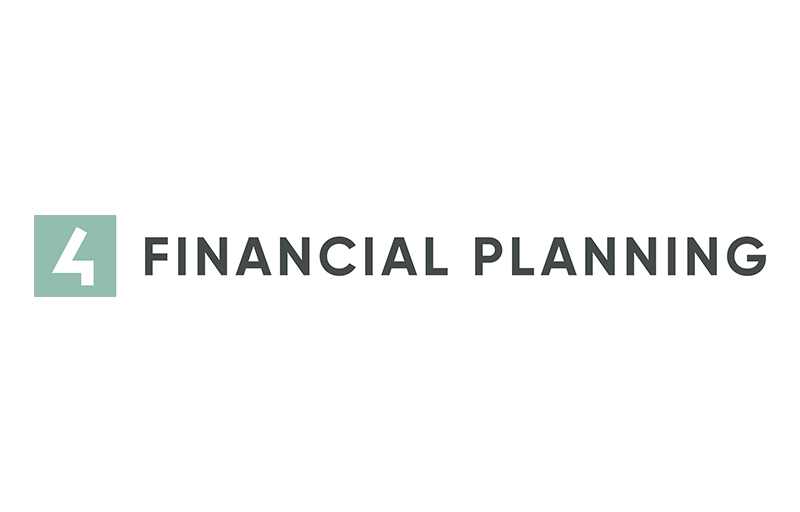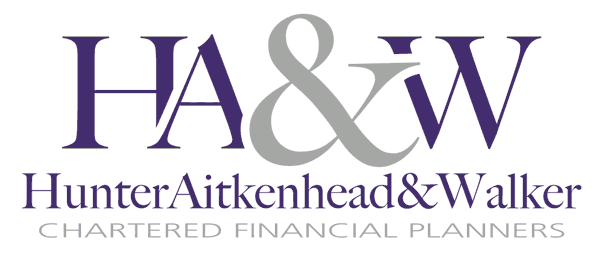
Register for our next webinar on May 22
10th August, 2022 - Interview
How to build a good adviser website with FTAdviser
Carmen Reichman 0:00
So I’m going to turn to Phil now. Phil, do you agree with Brian’s comments on having to go to a professional and the kind of times and potential costs?
Phil Bray 0:12
Absolutely. I think, naturally, we’ve got some skin in the game. We run an agency that builds websites. So I’m bound to say that you need to go to a professional to do it. But I do think marketing takes time, and that is your time or somebody else’s time, neither of which is free. And I think Brian made a good point, that to build a website might take three, four or five months, even six months, depending on a variety of factors. And most advisers and planners that we work with, don’t have the design, the coding skills, and the copywriting skills to build a website themselves. And certainly, when we’re building sites, we have one person do the design, one person do the development, another do the copy, and then another do the quality control, so there’s at least four or five people involved. And it’s unlikely an adviser or planner is going to have that expertise in their business.
Carmen Reichman 1:02
And so what’s the median kind of cost?
Phil Bray 1:07
Well, that’s a really difficult one to answer. It all depends on the scope of the website, the size, the number of pages, the number of page templates, and it is a very, very difficult one to answer because no two websites are exactly the same. It also depends on how much social proof you’ve got on there. Are you including videos of team? Are you including videos of clients as we would recommend that you do? So for me, I would suggest that the base starting point is 5 – 7,000 pounds, something like that, to get a high quality online presence. But that site will serve the adviser or planner well for four, five, six years. So if you think about that cost, but over that period of time, it’s actually relatively low cost. And compared to the value of the site in terms of bringing new clients in, etc.
Carmen Reichman 2:05
Absolutely. Now, let’s turn to the practical kind of element of this CPD. I suppose before you even approach a professional or even tried to do it yourself, you’re going to have to ask yourself some questions about what you want to achieve. So, what should you think about before you start building?
Phil Bray 2:27
I think you’ve got to start thinking about what you want the website to achieve for you. The adviser or planner may have some ideas in their mind about what they want to achieve. But I would suggest, talk to professional about it as well, because they will tease things out that maybe you didn’t know about. It’s a little bit like a financial planner going to see a client for the first time. The client might know what they want to achieve, but the planner might tease some things out that weren’t so obvious. So for me, it’s about starting with the end in mind, what do you want the site to achieve? I also think it’s about making sure that your proposition is nailed down. So, are you an adviser? Are you a planner? Are you a lifestyle financial planner? Are you a coach? What is your proposition? Because until you’ve got that nailed down, it’s really difficult to nail down the website. Almost impossible to build a website in conjunction with a proposition, the proposition done first, then the website. And, of course, you need to think as well about who you want to target, who the website should speak to, who the website is relevant for. And that applies to all marketing, until you understand your target audience, you can’t build a marketing plan, you can’t like collateral, you can’t build a website. And at that early stage as well, I will be thinking about what social proof are we going to include on the website. Brian talked about social proof, and for me, financial planners offer huge value to their clients. But showing will always be telling. And therefore, social proof shows the value of working with a financial adviser or financial planner. So we need to think about what social proof we’re going to include on the website. It might be client videos, it might be online ratings and reviews, it might be client survey results, it should potentially be all three of those things. What we need to avoid, of course, is just having one page of testimonials because it’s very, very 1990s and nobody is going to look at them. Almost nobody will look at testimonial pages.
Carmen Reichman 4:28
Okay, that’s interesting. So I put them up there?
Phil Bray 4:31
I don’t know. Testimonial pages, a lot of older style financial planning, financial advice websites will have a single page of testimonials. And the adviser will wash their hands and think social proof. But our research shows only between 1 and 2% of all website visitors will ever go and look at that testimonials page. So the bit that shows you’re really good at what you do, only one in 51 in 100 people are actually looking at it. So instead of doing that, we need to take a leaf out of the social media giants playbook. And if you’re on Facebook scrolling through your timeline, looking at what your friends and family are doing, you will see adverts. And some of those adverts you’ll scroll past some, you’ll pause and look at, some you’ll actually interact within click or play the video, or whatever. And Facebook is essentially interrupting our viewing and timeline with those adverts, so we have to see them. And we need to do exactly the same with social proof on websites. We need to take those reviews, those videos, those client survey results and scatter them around the site. So on the most popular pages, people see them while they’re browsing. So while people are looking at what they want to look at, they can’t help but see your social proof.
Carmen Reichman 5:43
Yeah, that’s a pretty good tip. And now you’ve answered all those questions about what you want to achieve, who you are, who you’re targeting. What’s next?
Phil Bray 5:53
Next, assuming you’re not building it yourself, you need to find an agency that’s going to help you build the site, and I would suggest you need an agency. Personally, I would just need an agency that specialises in financial services. And there’s a few of us that do this sort of stuff, but they will understand the difference between advice and planning. They’ll understand what the client means when they talk about cash flow forecasting, the five stages or six stages of the financial planning process. So you got to find the agency that you want to work with. That’s really the first stage, and then it moves on to design.
Carmen Reichman 6:30
I mean, this is the tricky part, is there any guide? How does an adviser know which colour is right for them? Which font is right for them? All of these things signify certain kind of things about yourself.
Phil Bray 6:49
Absolutely, it does. Most advisers and planners that we work with, or all firms actually to be fair, will have their logo. They’ll have the logo, they’ll have some fonts, they’ll have some colours. They might, if they’ve worked with a professional agency, have a set of brand guidelines, showing what those fonts are. But of course, what we’ve got to remember is how that font and the colour palette looks in print, will look different online, and different fonts and certainly different colours will resonate with different people in different ways. So I think the first thing to do is consider, if the font, the logo, the colour palette is right as it is now, both online and offline. If it is, then you can run with that. If it isn’t, then maybe you need to change it. To support that, I was chatting to a firm yesterday, they’ve got a lovely colour palette of a dark blue and silvery grey. But on the web online, it looks quite flat. It needs an extra colour bringing in to use for accents, key points and of course, calls to action.
Carmen Reichman 7:58
And have you ever come across any good self built adviser websites?
Phil Bray 8:05
Yes, there are without a doubt, some decent self built websites. I was chatting to a firm, only maybe 10 days ago, new financial planner, and he built the website himself. And it was a really, really good self built site. We reviewed it, there was things we changed, and some of those things we would change because his business has evolved and he’s taken on more clients so we can get more social proof in there. And some of it we would change just from a UX perspective or user experience perspective. But yeah, it was a really, really good self built site. He built it in WordPress. Most of the time, if it’s a self built site, it’ll generally be in Squarespace or Wix or something like that. But it is perfectly possible to do it if the adviser/planner has got the time scale and inclination to to do it. And when you see a good quality self built site, it’s generally where the firm is a new start firm, and during the authorisation period, the firm’s got a bit of time and can build a site for themselves.
Carmen Reichman 9:10
And what are the key elements on a website and an adviser should really have?
Phil Bray 9:16
I think there’s three to think about, to start with. I can talk all day for it, but I think there’s three to start with. The first is people. So financial planning is about two groups of people, it’s about clients, and it’s about the team, the people who deliver the financial planning. And our view is we should make people, clients, in the team, absolutely heroes of the website. They should be all over the site and try and create an immediate connection with a prospect who’s potentially on the site. From a prospect on the site, I’ve got a reason to be there. That’s what we call a trigger. And that’s a problem I want solving or an aspiration I want to achieve. And I want to know, as Brian said, whether the website of the firm I’m looking at, whether that firm can help me solve those issues or help me achieve those aspirations. So I want to see people like me, I want to see people staring back at me like me, and that’s where social proof comes in. So first thing in terms of making people hear over the website, it’s about clients, it’s about the team and making sure we’ve got good quality imagery of both. Our clients are saying nice things, the team, there’s detailed team profiles for everybody. So first thing is people. Second thing are what pages are we going to put on the website? So we’ve done some research and understand what the top 10 most popular pages are on financial adviser and planner websites. And a lot of those pages are missing. We wrote a blog last Friday, on our website, looking at how team pages are constructed on financial adviser and planner websites. And we believe there should be a team section, and each member of the team should have an individual page. But only about a quarter of firms have done that. So about 75% of firms are making that mistake. And you need to make sure that those top 10 list of pages, those most popular pages, we need to make sure that they’re all on the site. Otherwise, we’re not giving people what they’re looking for.
Carmen Reichman 11:21
And what are the top three of those?
Phil Bray 11:23
Top three, homepage. Always the most popular, and not surprisingly. The team section. So a team page is always second or third. And then it changes a little bit depending on what’s on the site. But if you’ve got a fees page on your website, that’s generally going to be in the top, that’s generally gonna be the top three. Also in the top three might be about us and who we work with, as well. So, first thing to think about is people, second thing is making sure you’re putting the right pages on there and then third is your social proof. What have you got on your website to demonstrate the value you deliver, demonstrate the benefit of working with you? And as I said, we believe there should be three things: client videos, client survey results, so when a survey published the results on your website, hardly anybody does that. And then online ratings and reviews, and we would always recommend Google and VouchedFor as the two review platforms that advisers and planners should use.
Carmen Reichman 12:20
Okay, interesting. Let’s look at some websites, good examples of really good websites? This is Henwood.
Phil Bray 12:33
This is Henwood Court. So this is a site we built, it went live in April. So what are we doing here? We’ve got a traditional navigation. So Brian talked about the fact that people need to be able to navigate around the site well, the user experience has got to be simple. So we’ve got a traditional navigation laid out here. So people can see easily what’s on the site. We have contact details, top right hand corner. And the first thing you see is a picture of Henwood Court’s office and the team there, so we’re trying to create an immediate connection. And then on the first scroll, we’ve got Nick and Anna, they’re two senior people within the business, and there’s a little video started behind there. And then we scroll down further explaining what we do, who we do it for. And then I think we go straight into explaining, this is how we work, business owners, this is how we work with people who are planning for retirement. So if I’m a business owner, or someone planning for my retirement, I know where to go. I know this site is for people like me. And equally if I’m a first time buyer, I know this site isn’t for someone like me. And then we scroll down a bit further, and then we’ve got quite a few client videos. So we worked really hard, recording more client videos in their office and the client’s homes, and then the team. So really showcasing people. And another site that does that is the Smith and Wardle website. So Smith and Wardle was launched maybe 18 months ago. And one of the things we did here, and to be fair, Henwood Court have done it, they’ve really invested in photography. So when we talk about showing people off, photography is so important. We encourage all our clients to get a photographer into their office and taking individual shots, but also stock shots. So just wander around the office taking photos of people. And there’s a wonderful image on the about us page for the Smith and Wardle website. We’ve got Jonathan at the top, having a giggle with one of his staff members. It just really brings the site alive. And then on the homepage here as we scroll down, we’ve got the office, scroll down, we go straight into their clients. So all this homepage here is either about people and their clients, their team or social proof. So we’ve got people, we’ve got a Smith and Wardle video and then we’ve got their team there as well. And then it’s also worth looking at this one, which is the Charlton House website. So this, again, just from a navigational perspective, I think is important. So Charlton House have got an office in London, and an office in Hong Kong and they work with people who move from one side to the other. And this is worth showcasing and showing because we’ve got the traditional navigation, but actually, you’ve got London and Hong Kong at the top, so you can easily toggle between the two. You can easily toggle between the two and get onto the Hong Kong site. And it actually looks quite different, doesn’t it? It does, it looks different. It’s got a picture of Hong Kong, it’s got some videos of Hong Kong on there. So that’s the whole point, it resonates with me as being in Hong Kong. And occasionally, you do see adviser websites where they’re based in a sleepy southern town, somewhere in Hampshire or somewhere, and then they’ve got a picture of the London skyline on their website and it just doesn’t make sense. And we need to immediately resonate with the person who’s visited the website. Brian talked about the halo effect, we talk about positioning yourself as a go-to expert. So when I hit a website from a prospect, have I found my expert? Have I found, as Brian said, my saviour?
Carmen Reichman 16:23
Great. Well, that makes perfect sense. Thanks a lot for that. Thanks to all our guests today. Thanks Phil, for coming in. And thank you for watching. I hope you find the session useful.
Hear from our clients
Working with some great businesses.
Founder & Financial Planner, 4 Financial Planning
"The brand, logo and website has hit the brief perfectly and I couldn’t be happier! I wouldn’t hesitate to recommend them.”
Read More
Managing Director, NextWealth
"They were a delight to work with – super responsive to our requests and also brought lots of good ideas to the table."
Read More
Managing Director, Altura Mortgage Finance
"Best of all, their results driven approach is both refreshing and helping us achieve real goals. Thank you Yardstick!”
Read More
Director and Financial Planner, Annetts & Orchard
"I’m a big Yardstick fan now and look forward to working with them on future projects."
Read More
Managing Director, Handford Aitkenhead & Walker
"We have felt like collaborators, rather than customers, and feel like Phil and his team has a vested interest in our marketing success that far exceeds his fee.”
Read More
Financial Planner, IQ Financial
We were lucky to be referred to Yardstick last year. We are delighted we hired them. They have specialist knowledge designed specially to help Financial Planning businesses like ours.
Read More
Head of Marketing, Ellis Bates Financial Advisers
Phil's style is informed, humorous and collaborative. The content is punchy, relevant, a go-to guide on how to create more recommendations and prompts action with no exceptions. Great workshop.
Read More
Financial Planner and Founder, Delaunay Wealth
I am absolutely delighted with all the work the Yardstick team has done for us and am very excited about how this will drive our new business/client acquisition in future. I would highly recommend them to any financial planning firm that takes their business seriously.
Read More
Director and Financial Planner, Insight Wealth
Great to work with a good professional outfit that had provided us direction and clear thinking in marketing our business effectively to obtain quality new clients.
Read More
Director & Financial Planner, Citygate Financial Planning
A thorough and excellent service. Phil and his team know exactly what to do, how to do it and when to do it. We very much look forward to working together more in the future.
Read More
Get in touch
Request a callback
Whatever your marketing challenges, we're here to help. Simply complete this form and we'll be in touch.



